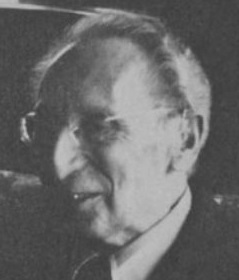Herbert Feigl facts for kids
Quick facts for kids
Herbert Feigl
|
|
|---|---|

Herbert Feigl (1973)
|
|
| Born | 14 December 1902 |
| Died | 1 June 1988 (aged 85) |
| Era | 20th-century philosophy |
| Region | Western philosophy |
| School | Analytic philosophy Vienna Circle |
| Thesis | Zufall und Gesetz: Versuch einer naturerkenntnistheoretischen Klarung des Wahrscheinlichkeits- und Induktionsproblems (Chance and Law: An Epistemological Analysis of the Roles of Probability and Induction in the Natural Sciences) (1927) |
| Notable students | Hugh Mellor |
|
Main interests
|
Philosophy of science |
|
Notable ideas
|
Nomological danglers |
|
Influences
|
|
|
Influenced
|
|
Herbert Feigl (born December 14, 1902 – died June 1, 1988) was an important Austrian-American philosopher. He was one of the first members of a famous group called the Vienna Circle. He also came up with the interesting idea of "nomological danglers".
Contents
Early Life and Studies
Herbert Feigl was born in a place called Reichenberg (now Liberec) in Bohemia. His family was Jewish, but they were not very religious. His father was a weaver who later became a textile designer.
In 1922, Feigl started studying at the University of Vienna. He focused on physics and philosophy. Some of his teachers were famous thinkers like Moritz Schlick and Hans Hahn.
Joining the Vienna Circle
In 1924, Feigl became a member of the Vienna Circle. This was a group of philosophers and scientists who met to discuss ideas about logic and science. Feigl was one of the few members who had many talks with other important philosophers like Ludwig Wittgenstein and Karl Popper.
In 1927, Feigl earned his doctorate degree from Vienna. His main project was about "Chance and Law" in natural sciences. In 1929, he published his first book, which was about "Theory and Experience in Physics."
Moving to America and New Ideas
In 1930, Feigl received a special scholarship. This allowed him to visit Harvard University in the United States. There, he met other smart people like physicist Percy Williams Bridgman and philosopher Willard Van Orman Quine. He felt they shared similar ideas.
In 1931, Feigl wrote a paper with Albert Blumberg. They suggested that the philosophy known as "logical positivism" should be called "logical empiricism" instead. This was because their ideas were more focused on how science uses real-world observations.
Life in the United States
Also in 1930, Feigl married Maria Kaspar. They moved to the United States and settled in Iowa. Feigl started working as a philosophy professor at the University of Iowa. Their son, Eric Otto, was born in 1933.
In 1940, Feigl became a professor at the University of Minnesota. He stayed there for 31 years. He worked closely with another philosopher named Wilfrid Sellars. Together, they created many projects. They even started a journal called Philosophical Studies in 1949.
In 1953, Feigl started the Minnesota Center for Philosophy of Science. This was the first center of its kind in the United States. It helped bring together thinkers who studied the philosophy of science. In 1967, he was given the special title of Regents Professor.
Feigl's Philosophy
Herbert Feigl strongly believed that empiricism is the best way to understand experimental science. Empiricism means that knowledge comes from experience and observation. Even though he became a philosopher, he always kept the practical mindset of a scientist.
He was known as a true "philosopher of science." He also signed the Humanist Manifesto, which is a document about human values and ethics.
Later Years
Feigl retired from his teaching career in 1971. He passed away on June 1, 1988, in Minneapolis due to cancer. His wife, Maria, passed away the following year. They were survived by their son, Eric O. Feigl, who became a professor of physiology.

